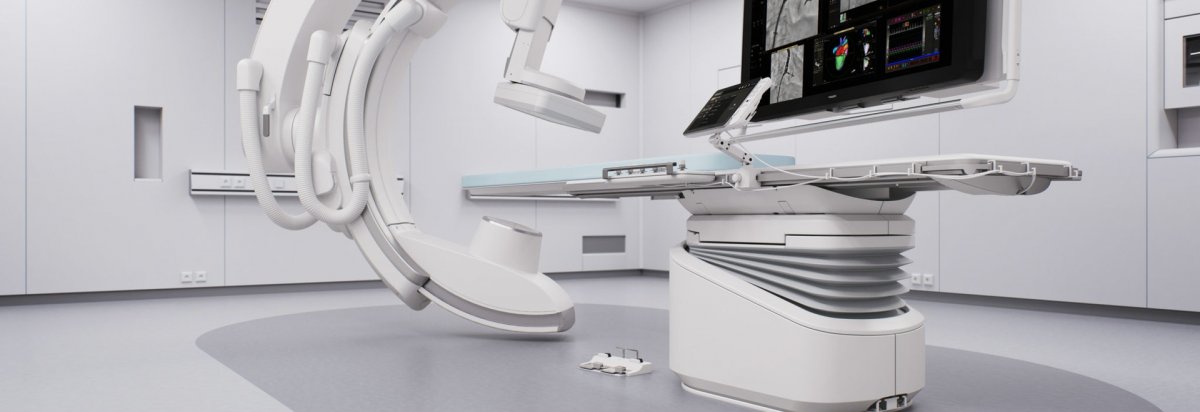Philips launches its Azurion with FlexArm to aid patient imaging and positioning during image-guided procedures.
During increasingly complex interventions, clinicians need to quickly and easily visualise critical anatomy and identify changes to the patient during the procedure. Azurion with FlexArm is designed to allow the clinician to perform imaging across the whole patient in both 2D and 3D. As the clinician moves the system, the image beam automatically maintains alignment with the patient, allowing more consistent visualisation and enabling them to keep their focus on the treatment.
The range and complexity of diseases that can be treated with minimally invasive procedures continues to expand. Correspondingly, the procedures themselves are also becoming more complex, requiring more physicians from different disciplines to be at the patient’s tableside, working together in a highly coordinated way. As a result, the clinical team is required to carry out increasingly challenging procedures in a highly constrained environment.
Azurion with FlexArm’s innovative design provides exceptional flexibility and intuitive control. Powered by a kinematic engine, the system moves on eight different axes, all controlled with its single ?Axsys’ controller. Simulation tests with clinicians have demonstrated the system’s potential to significantly reduce the repositioning of the patient, staff and equipment to improve access for minimally invasive procedures, including those that enter the body through the patient’s wrist (?radial access’), and to reduce the risk of unintentional pulling of wires and tubes, as well as significant time savings.1 The system is ideally suited for Hybrid ORs that cater to multiple specialties in one room, such as a combination of surgical and endovascular procedures.
Azurion with FlexArm is the latest addition to Philips’ portfolio of systems, smart devices, software and services in image-guided therapy. As the range of diseases that can be treated with minimally invasive procedures continues to expand and the procedures themselves become more efficient, the patient’s treatment experience continues to improve. They experience less trauma, and as a result their stay in hospital can be dramatically reduced'often returning home after one night in hospital, and for some procedures even leaving the hospital on the same day.
